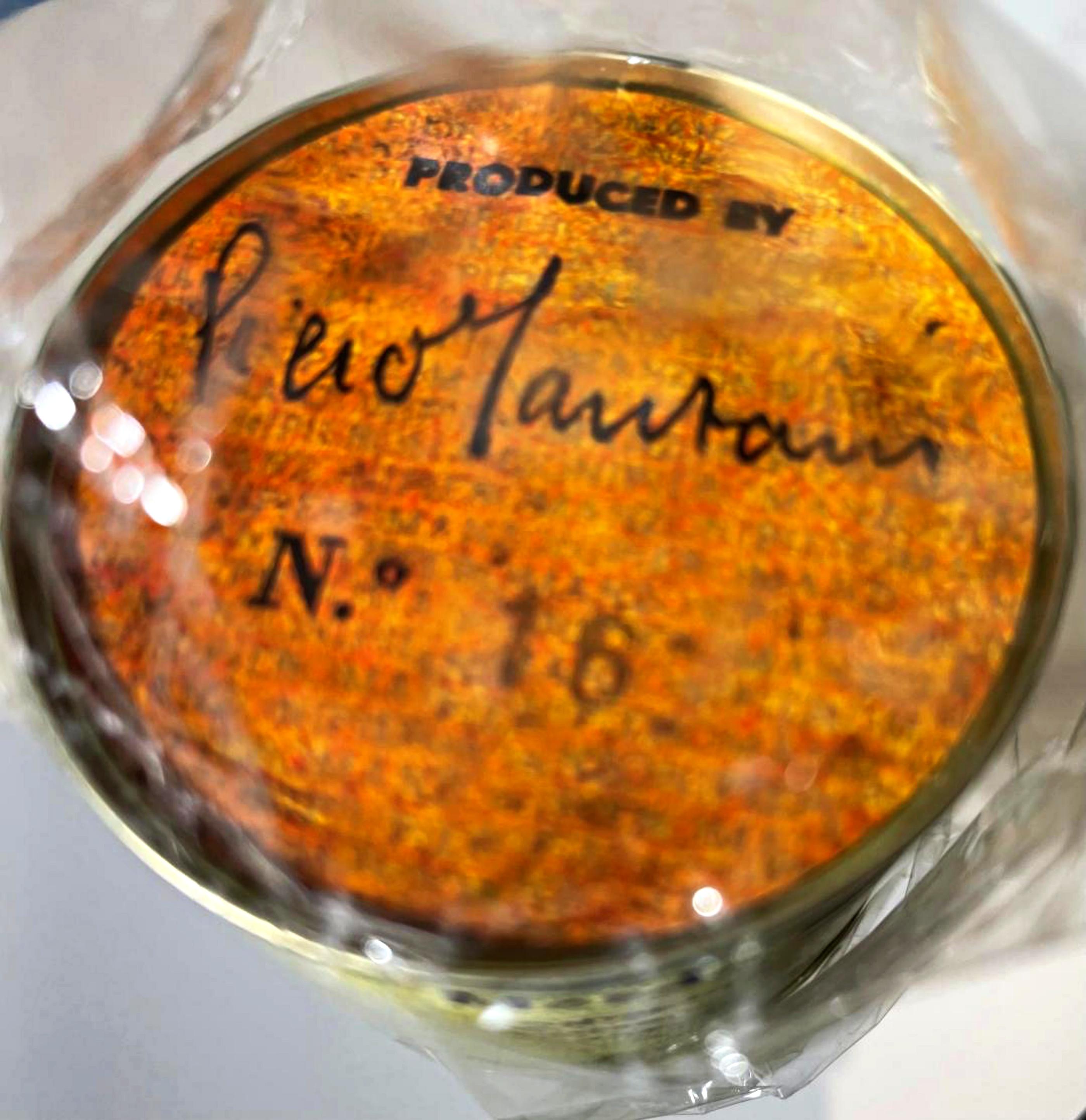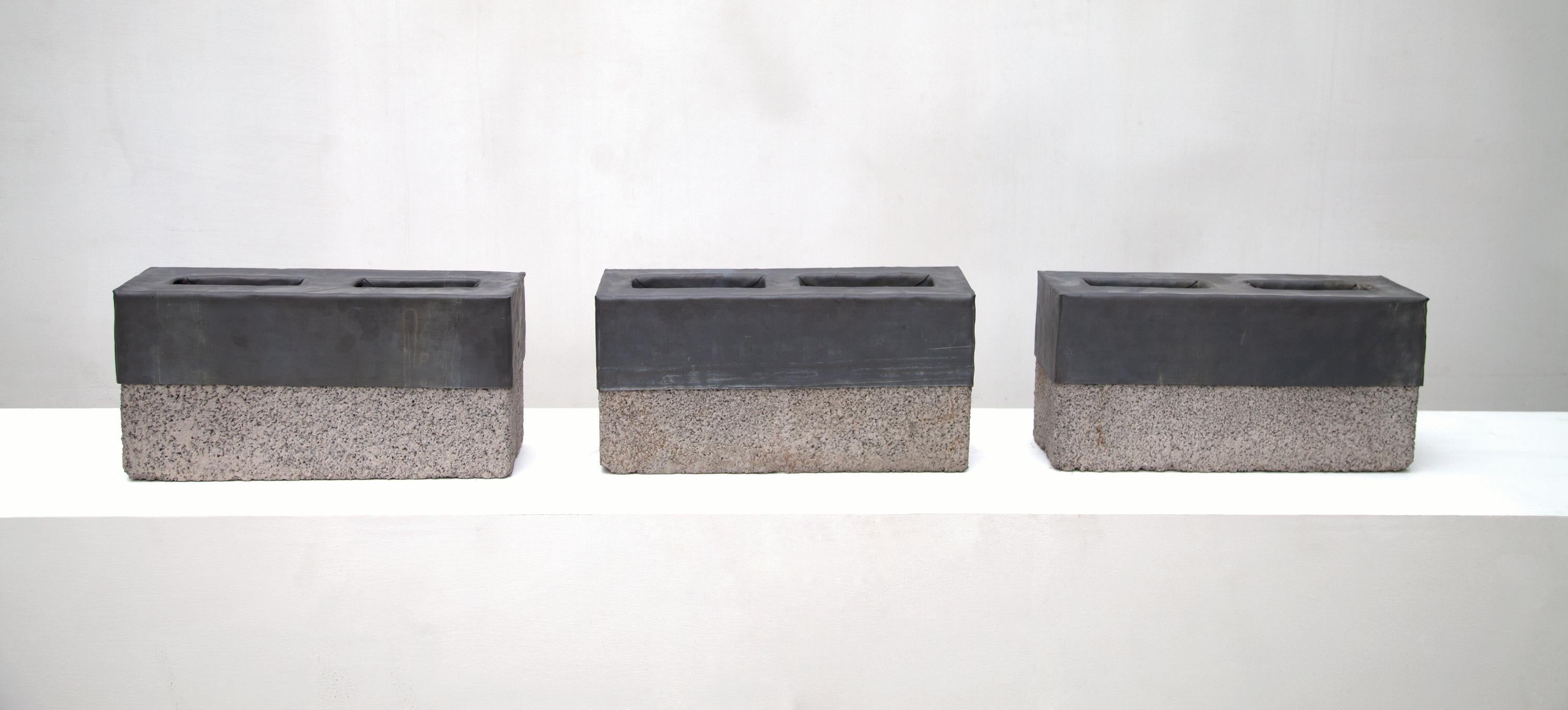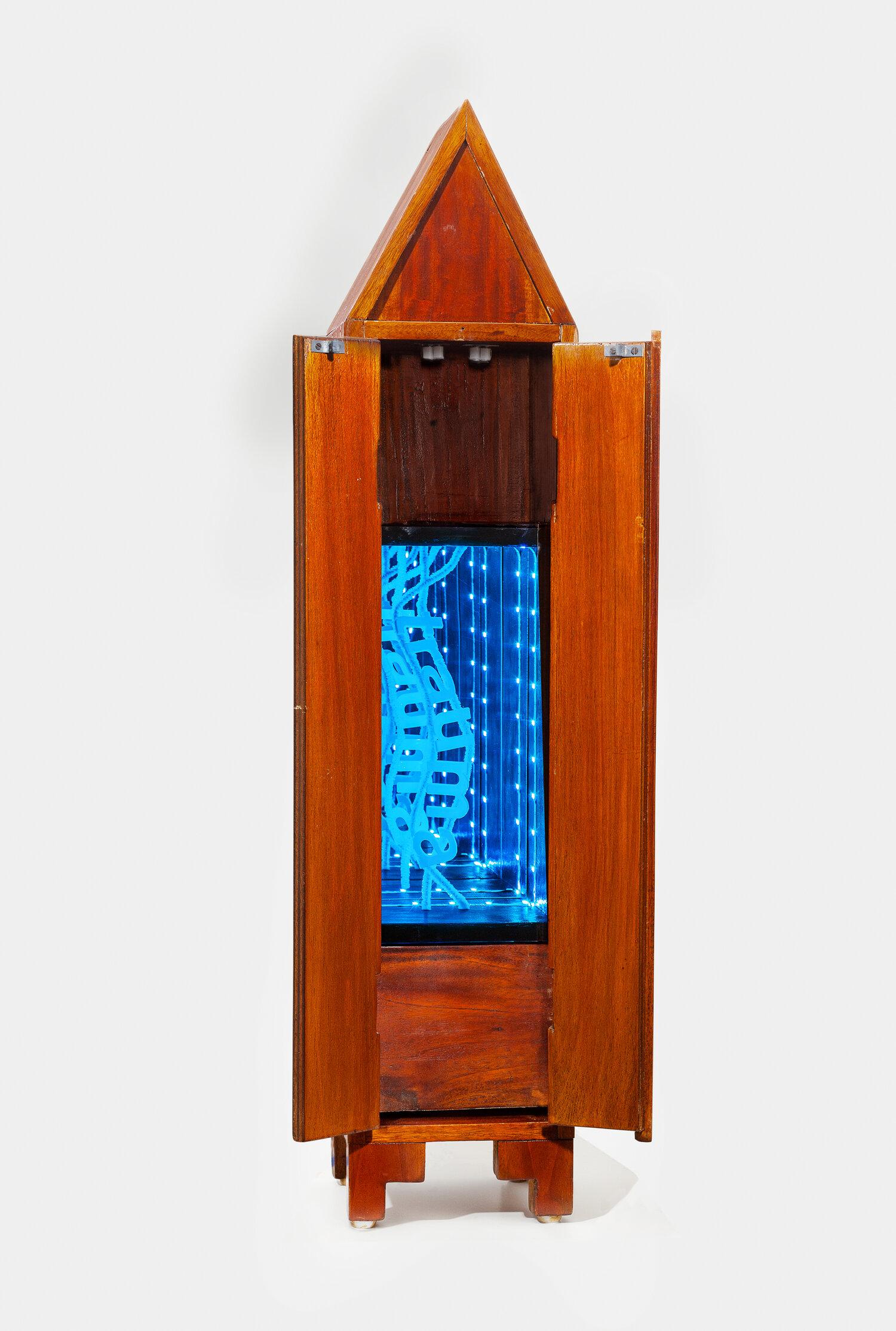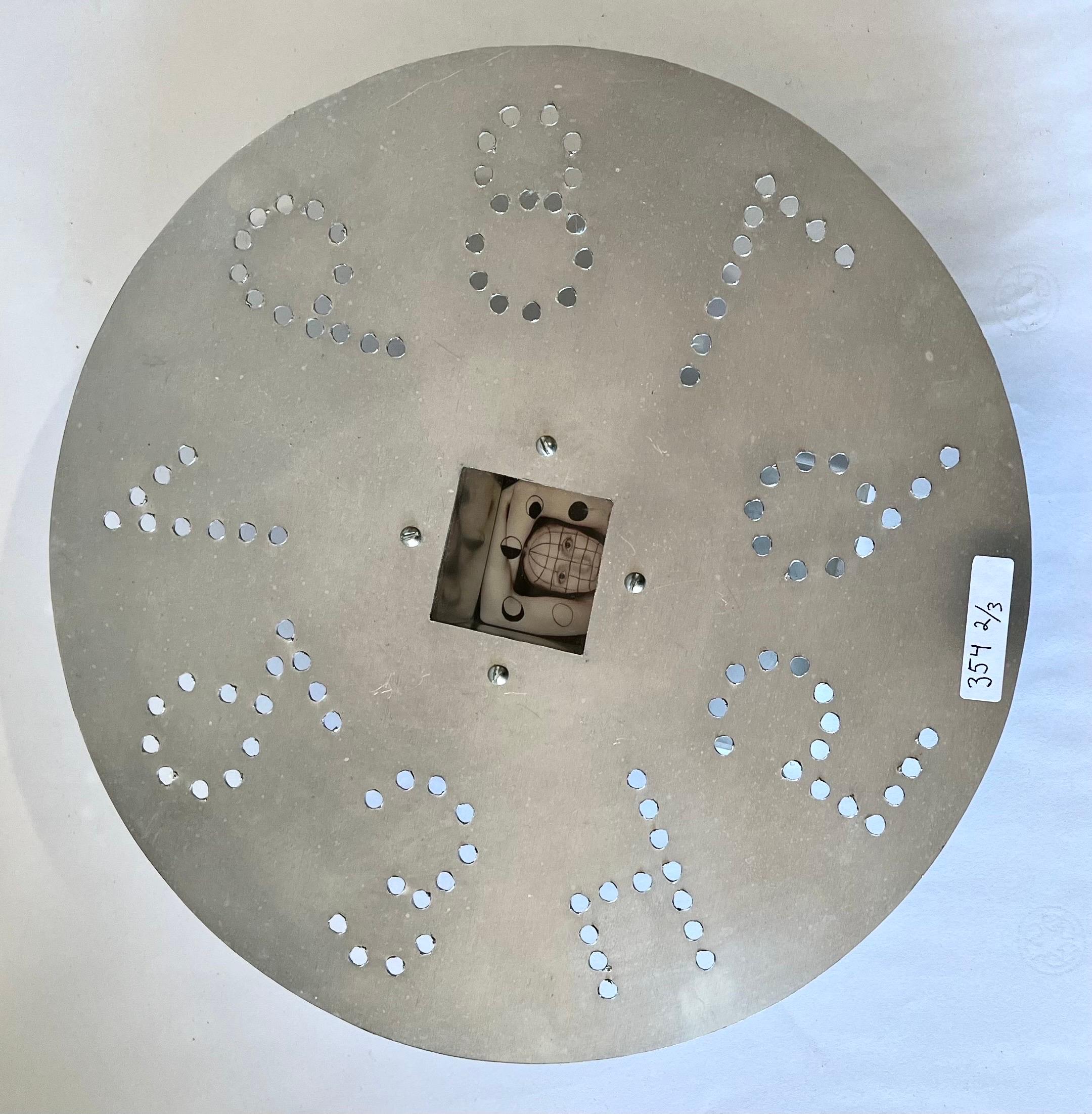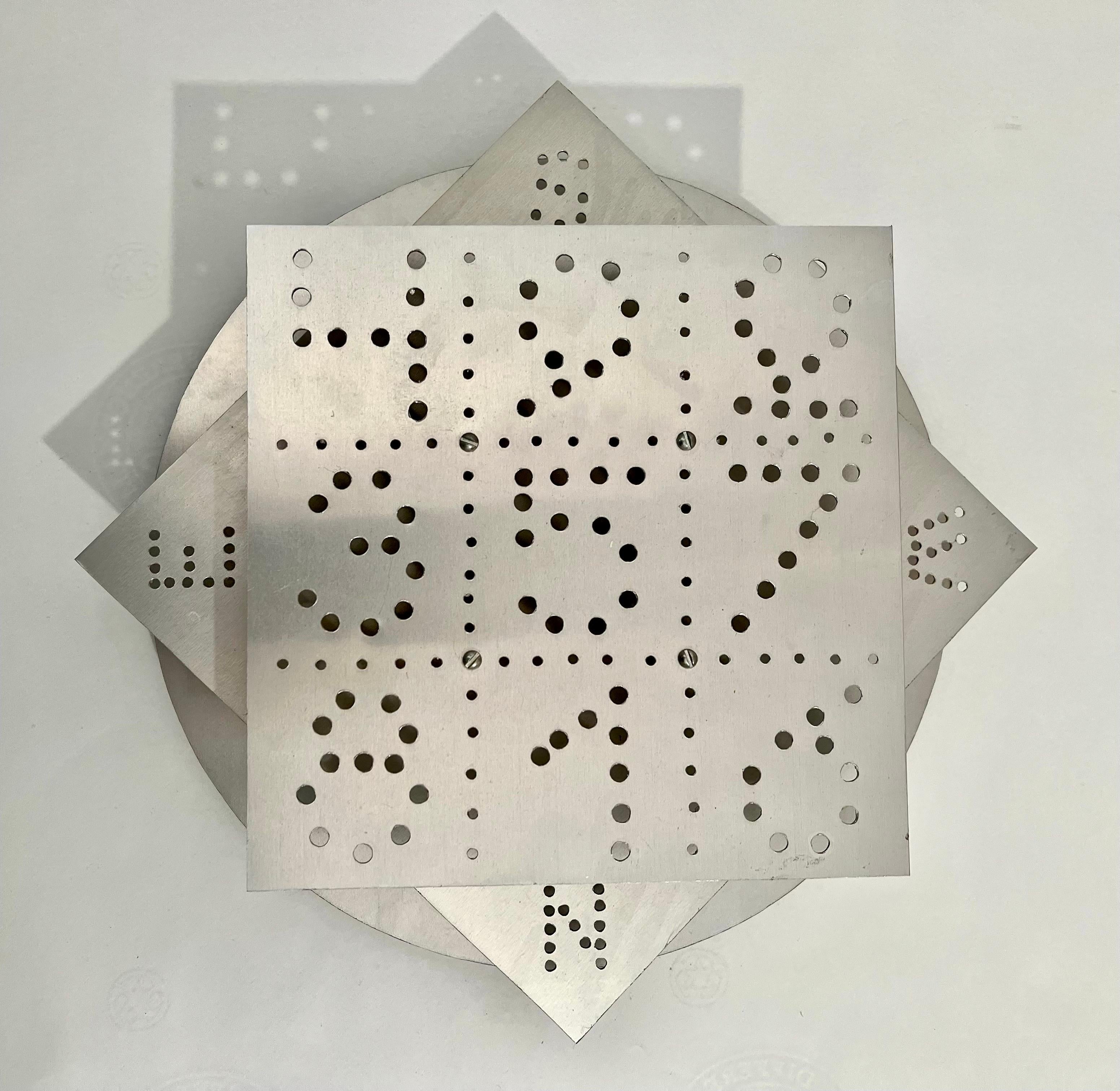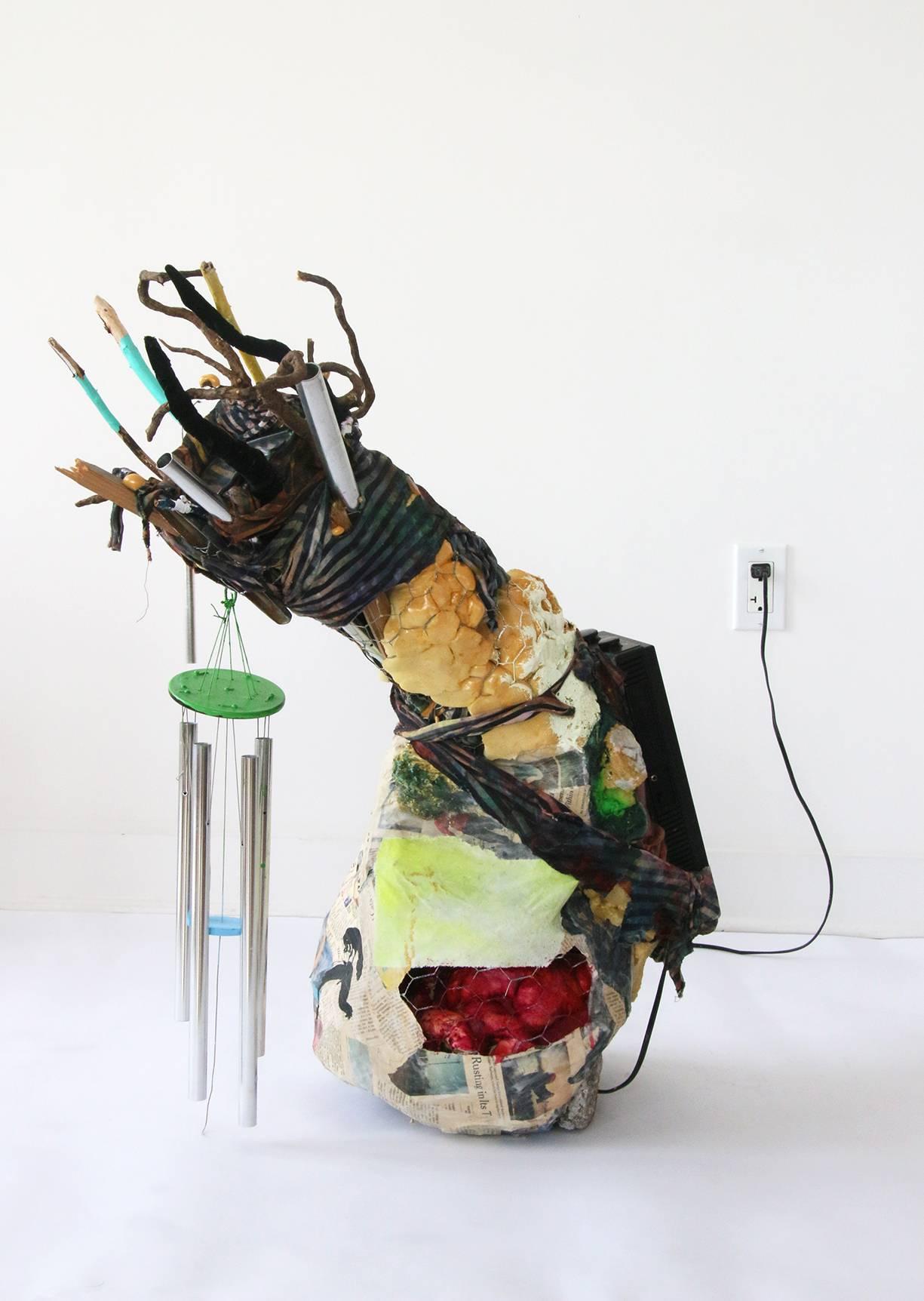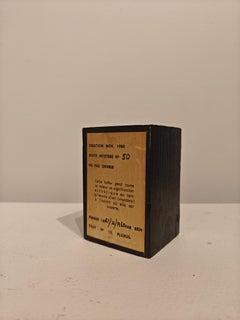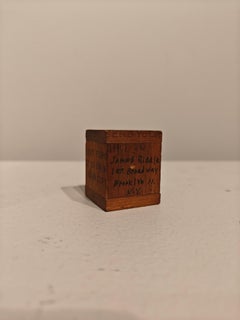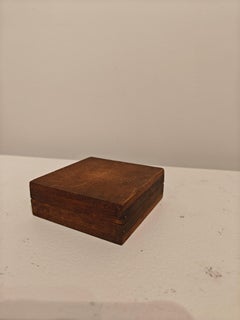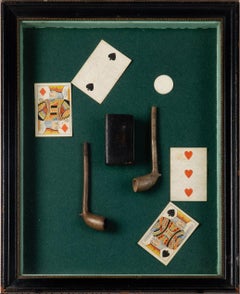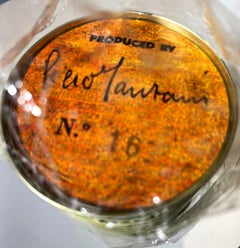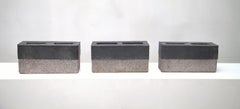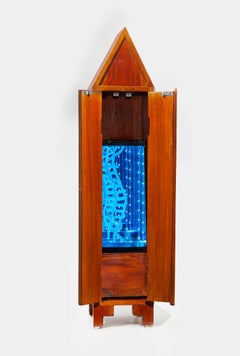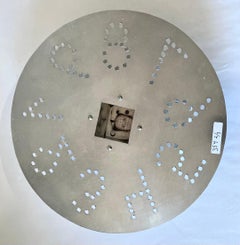Items Similar to "Happy New Year" Nam June Paik and Charlotte Moorman, Fluxus Electric Sculpture
Want more images or videos?
Request additional images or videos from the seller
1 of 6
Nam June Paik"Happy New Year" Nam June Paik and Charlotte Moorman, Fluxus Electric Sculpturecirca 1970
circa 1970
$3,500
£2,649.83
€3,068.82
CA$4,953.30
A$5,549.70
CHF 2,886.08
MX$67,238.75
NOK 36,769.99
SEK 34,326.06
DKK 22,908.08
About the Item
Nam June Paik and Charlotte Moorman
Happy New Year, circa 1970
Signed by both artists
Electronic circuit board
8 1/4 x 9 1/4 x 1 1/4 inches
Nam June Paik (1932–2006), internationally recognized as the "Father of Video Art," created a large body of work including video sculptures, installations, performances, videotapes and television productions. He had a global presence and influence, and his innovative art and visionary ideas continue to inspire a new generation of artists.
Born in 1932 in Seoul, Korea, to a wealthy industrial family, Paik and his family fled Korea in 1950 at the outset of the Korean War, first to Hong Kong, then to Japan. Paik graduated from the University of Tokyo in 1956, and then traveled to Germany to pursue his interest in avant-garde music, composition and performance. There he met John Cage and George Maciunas and became a member of the neo-dada Fluxus movement. In 1963, Paik had his legendary one-artist exhibition at the Galerie Parnass in Wuppertal, Germany, that featured his prepared television sets, which radically altered the look and content of television.
After immigrating to the United States in 1964, he settled in New York City where he expanded his engagement with video and television, and had exhibitions of his work at the New School, Galerie Bonino and the Howard Wise Gallery. In 1965, Paik was one of the first artists to use a portable video camcorder. In 1969, he worked with the Japanese engineer Shuya Abe to construct an early video-synthesizer that allowed Paik to combine and manipulate images from different sources. The Paik-Abe video synthesizer transformed electronic moving-image making. Paik invented a new artistic medium with television and video, creating an astonishing range of artworks, from his seminal videotape Global Groove (1973) that broke new ground, to his sculptures TV Buddha (1974), and TV Cello (1971); to installations such as TV Garden (1974), Video Fish (1975) and Fin de Siecle II (1989); videotapes Living with the Living Theatre (1989) and Guadalcanal Requiem (1977/1979); and global satellite television productions such as Good Morning Mr. Orwell, which broadcast from the Centre Pompidou in Paris and a WNET-TV studio in New York City Jan. 1, 1984.
Paik has been the subject of numerous exhibitions, including two major retrospectives, and has been featured in major international art exhibitions including Documenta, the Venice Biennale and the Whitney Biennial. The Nam June Paik Art Center opened in a suburb of Seoul, South Korea, in 2008.
Charlotte Moorman was an American cellist and performance artist who was a strong driving force for avant-garde music; she was dubbed the ‘Jean d’Arc of new music’ by composer Edgar Varese. In 1963, Moorman founded the Annual Avant Garde Festival in New York, which she directed for two decades.
Moorman frequently collaborated with Korean Nam June Paik over a decades-long period who was known as the ‘father of video art’. Paik created some works specifically with Moorman in mind including TV Bra for Living Sculpture (1969) and TV-Cello (1971).
Following Moorman’s death from breast cancer in 1991, Paik made a film entitled Topless Cellist (1995) about her life and avant-garde performances. Moorman also collaborated with other Fluxus artists including Carolee Schneemann, Joseph Beuys, Takehisa Kosugi and Jim McWilliams (Sky Kiss, 1968-1980).
- Creator:Nam June Paik (1932 - 2006, American, Korean)
- Creation Year:circa 1970
- Dimensions:Height: 8.25 in (20.96 cm)Width: 9.25 in (23.5 cm)Depth: 1.25 in (3.18 cm)
- Medium:
- Movement & Style:
- Period:
- Condition:
- Gallery Location:New York, NY
- Reference Number:1stDibs: LU1841216807962
About the Seller
5.0
Platinum Seller
Premium sellers with a 4.7+ rating and 24-hour response times
Established in 2022
1stDibs seller since 2022
118 sales on 1stDibs
Typical response time: <1 hour
- ShippingRetrieving quote...Shipping from: New York, NY
- Return Policy
Authenticity Guarantee
In the unlikely event there’s an issue with an item’s authenticity, contact us within 1 year for a full refund. DetailsMoney-Back Guarantee
If your item is not as described, is damaged in transit, or does not arrive, contact us within 7 days for a full refund. Details24-Hour Cancellation
You have a 24-hour grace period in which to reconsider your purchase, with no questions asked.Vetted Professional Sellers
Our world-class sellers must adhere to strict standards for service and quality, maintaining the integrity of our listings.Price-Match Guarantee
If you find that a seller listed the same item for a lower price elsewhere, we’ll match it.Trusted Global Delivery
Our best-in-class carrier network provides specialized shipping options worldwide, including custom delivery.More From This Seller
View All"Mystery Box (Boîte mystère)" Ben Vautier, Fluxus Movement Conceptual Sculpture
By Ben Vautier
Located in New York, NY
Ben Vautier
Mystery Box (Boîte mystère), 1965
Painted wood with letterpress label
3 13/16 × 2 3/4 × 2 7/16 inches
Ben Vautier was a French artist known for his text-based paintings...
Category
1960s Conceptual Abstract Sculptures
Materials
Wood, Paper
"Secret Santa" Takako Saito, Fluxus Movement Conceptual Construction, Sculpture
Located in New York, NY
Takako Saito
Secret Santa , 1965
Stamped inscribed in pen recipients name
Wood construction
1 1/2 x 1 1/4 x 1 1/4 inches
Takako Saito is a Japanese artist closely associated with F...
Category
1960s Conceptual Abstract Sculptures
Materials
Wood
"Make 300 Holes with Any Implement: This Is My Gift" Takako Saito, Concept Art
Located in New York, NY
Takako Saito
Make 300 Holes with Any Implement: This Is My Gift , 1965
Wood box containing wood frame with paper and stamped ink
3 3/8 × 3 3/8 × 1 1/4
Takako Saito is a Japanese ar...
Category
1960s Conceptual Abstract Sculptures
Materials
Wood, Paper, Ink
"Montage" Charles Green Shaw, Antique Playing Cards and Pipe Montage
By Charles Green Shaw
Located in New York, NY
Charles Green Shaw
Montage, circa 1935
Labeled on verso
Pipes, antique playing cards
19 x 16 inches
Charles Green Shaw, born into a wealthy New...
Category
1930s American Modern Mixed Media
Materials
Mixed Media
"Have a Nice Day" Al Loving, Abstract Expressionist Colorful Mailbox Sculpture
By Al Loving
Located in New York, NY
Al Loving
Have a Nice Day, 1992
Mailbox, acrylic paint, rag paper
8 1/2 inches high x 6 1/2 inches wide x 18 3/4 inches deep
Al Loving studied painting at the University of Illinoi...
Category
1990s Abstract Expressionist Abstract Sculptures
Materials
Metal
"Aim I" Alexander Liberman, Bright Red, Large Modernist Metal Sculpture
By Alexander Liberman
Located in New York, NY
Alexander Liberman
Aim I, 1980
Painted aluminum
83 high x 26 wide x 26 deep inches
Edition of 15
Regarded as a groundbreaking Minimalist artist, Alexander Liberman created pieces t...
Category
1980s Minimalist Abstract Sculptures
Materials
Metal
You May Also Like
Merda d'Artista - Merde d'Artiste - Artist's Shit Limited Edition sealed tin can
By Piero Manzoni
Located in New York, NY
Piero Manzoni
Merda d'Artista - Merde d'Artiste - Artist's Shit, 2013
Sealed tin can in special offset lithograph paper and shrink wrapped sealed with a fingerprint
The artist's sign...
Category
2010s Conceptual Figurative Sculptures
Materials
Metal
Sculpture, Cinder Blocks For my Father
By Alberto Montaño Mason
Located in Cuernavaca, Morelos
Ash and lead blocks.
Piece made of 3 blocks
Exhibited at the International Art Fair, Zona Maco 2019 in Mexico City.
Exhibited at Mana Contemporary at Jersey City, New Jersey in 201...
Category
21st Century and Contemporary Conceptual Abstract Sculptures
Materials
Metal
Heirloom
By Nancy Larrew
Located in Santa Monica, CA
Wood, mirrors, wire, plastic, LED lights.
Artist statement:
"Behind the doors of this cabinet/tower is an infinity mirror and a DNA double helix branded with the word “trauma.” The...
Category
21st Century and Contemporary Conceptual Abstract Sculptures
Materials
Wire
$2,592 Sale Price
20% Off
Russian Samizdat Art Conceptual Photo Sculpture Assemblage Gerlovin & Gerlovina
Located in Surfside, FL
Rimma Gerlovina and Valeriy Gerlovin
Clock, 1987-94
Aluminum sculpture, mixed media and c-print photograph construction, c-print, felt tip marker
13 h × 13 w × 4 d in (30 × 30 × 6 cm)
Rimma Gerlovina and Valeriy Gerlovin were founding members of the underground conceptual movement Samizdat in the Soviet Union, described in their book Russian Samizdat Art. Based on a play of paradoxes, their work is rich with philosophic and mythological implications, reflected in their writing as well. Their book Concepts was published in Russia in 2012. The work by Rimma Gerlovina and Valeriy Gerlovin is emphatically contemporary. The artist couple were part of the Moscow Conceptualists, their performance Costumes, from 1977, deepened their ongoing work with linguistic semiotic systems and their own bodies. Considering the context in which Gerlovina and Gerlovin made their work—that of political restrictions on public life, of unfreedom, and censorship—their collaborative togetherness must also be read as a space of possibility for political community and resistance. Rimma Gerlovina’s hair is featured prominently in the art of the Gerlovins as a constructing element of the body. Used for the linear drawings her braids transmit transpersonal waves reminiscent of an aura of live filaments. Long loose hairs function as threads of life; streaming in abundance, they allude to Aphrodisiac vitality and Samsonian strength. On the other hand, they are the haircloth worn during mourning and penitence. In New York they continued to make sculptural objects, and their photographic projects grew into an extended series called Photoglyphs. In their photographs, they use their own faces to explore the nature of thought and what lies beyond it. Since coming to the United States in 1980, they had many exhibitions in galleries and museums including the Art Institute of Chicago. The New Orleans Museum of Art launched a retrospective of their photography, which traveled to fifteen cities. Group exhibitions include the Venice Biennale, the Guggenheim Museum, New York, Smithsonian National Museum of American Art, Washington D.C., Bonn Kunsthalle, Germany, Tokyo Metropolitan Museum of Photography, State Tretyakov Gallery, Moscow, and others.
Samizdat or “self-published” began in the Soviet Union, and Samizdat art consists mainly of books and magazines published and distributed by the artists who made them. Samizdat art has sources in the innovative books and magazines turned out by the early 20th century Russian avant-garde—artists and writers like Olga Rozanova, Vladimir Mayakovsky, El Lissitzky, and Alexander Rodchenko.
Artists as varied as Alexander Archipenko, Leon Bakst, Marc Chagall, Naum Gabo, Alexandra Exter...
Category
1980s Conceptual Figurative Photography
Materials
Metal
Russian Samizdat Art Conceptual Compass Sculpture Assemblage Gerlovin, Gerlovina
Located in Surfside, FL
Rimma Gerlovina and Valeriy Gerlovin
Compass, 1988
Aluminum sculpture, mixed media and c-print photograph construction, c-print, felt tip marker
12.5 h × 12.5w × 4 d in (30 × 30 × 6 cm)
Rimma Gerlovina and Valeriy Gerlovin were founding members of the underground conceptual movement Samizdat in the Soviet Union, described in their book Russian Samizdat Art. Based on a play of paradoxes, their work is rich with philosophic and mythological implications, reflected in their writing as well. Their book Concepts was published in Russia in 2012. The work by Rimma Gerlovina and Valeriy Gerlovin is emphatically contemporary. The artist couple were part of the Moscow Conceptualists, their performance Costumes, from 1977, deepened their ongoing work with linguistic semiotic systems and their own bodies. Considering the context in which Gerlovina and Gerlovin made their work—that of political restrictions on public life, of unfreedom, and censorship—their collaborative togetherness must also be read as a space of possibility for political community and resistance. Rimma Gerlovina’s hair is featured prominently in the art of the Gerlovins as a constructing element of the body. Used for the linear drawings her braids transmit transpersonal waves reminiscent of an aura of live filaments. Long loose hairs function as threads of life; streaming in abundance, they allude to Aphrodisiac vitality and Samsonian strength. On the other hand, they are the haircloth worn during mourning and penitence. In New York they continued to make sculptural objects, and their photographic projects grew into an extended series called Photoglyphs. In their photographs, they use their own faces to explore the nature of thought and what lies beyond it. Since coming to the United States in 1980, they had many exhibitions in galleries and museums including the Art Institute of Chicago. The New Orleans Museum of Art launched a retrospective of their photography, which traveled to fifteen cities. Group exhibitions include the Venice Biennale, the Guggenheim Museum, New York, Smithsonian National Museum of American Art, Washington D.C., Bonn Kunsthalle, Germany, Tokyo Metropolitan Museum of Photography, State Tretyakov Gallery, Moscow, and others.
Samizdat or “self-published” began in the Soviet Union, and Samizdat art consists mainly of books and magazines published and distributed by the artists who made them. Samizdat art has sources in the innovative books and magazines turned out by the early 20th century Russian avant-garde—artists and writers like Olga Rozanova, Vladimir Mayakovsky, El Lissitzky, and Alexander Rodchenko.
Artists as varied as Alexander Archipenko, Leon Bakst, Marc Chagall, Naum Gabo, Alexandra Exter...
Category
1980s Conceptual Figurative Photography
Materials
Metal
Chimera Bad
By Niki Singleton
Located in Los Angeles, CA
Acrylic, oil, paper collage, car side mirror, branches, chimes, rag,
clock radio
(Instructions: Press “on” button on side of radio to turn on. Tune to suitable station)
A pa...
Category
21st Century and Contemporary Conceptual Abstract Sculptures
Materials
Acrylic, Mirror, Mixed Media, Oil, Rag Paper
